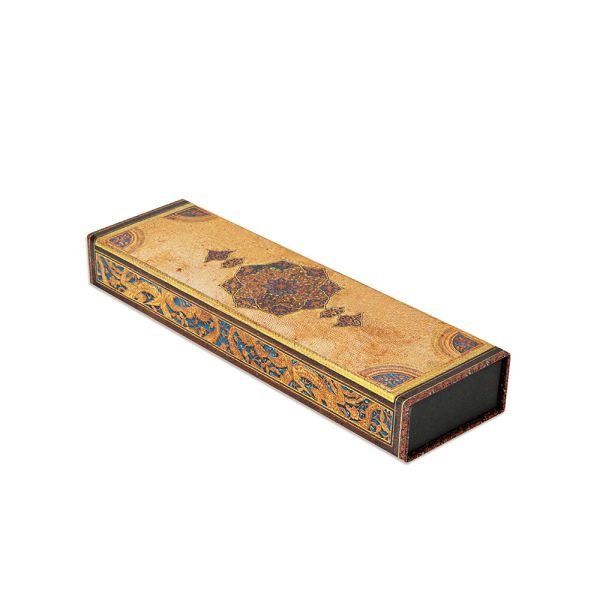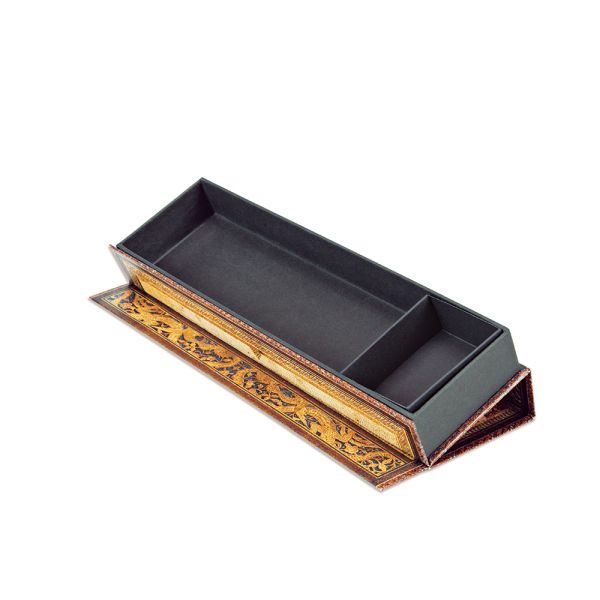Penar - Safavid | Paperblanks

Detalii Penar - Safavid | Paperblanks
carturesti.ro
42.75 Lei
57 Lei
Scolaresti
Paperblanks
Penar - Safavid | Paperblanks - Disponibil la carturesti.ro
Pe YEO găsești Penar - Safavid | Paperblanks de la Paperblanks, în categoria Scolaresti.
Indiferent de nevoile tale, Penar - Safavid | Paperblanks din categoria Scolaresti îți poate aduce un echilibru perfect între calitate și preț, cu avantaje practice și moderne.
Preț: 42.75 Lei
Caracteristicile produsului Penar - Safavid | Paperblanks
- Brand: Paperblanks
- Categoria: Scolaresti
- Magazin: carturesti.ro
- Ultima actualizare: 18-11-2021 23:25:47
Comandă Penar - Safavid | Paperblanks Online, Simplu și Rapid
Prin intermediul platformei YEO, poți comanda Penar - Safavid | Paperblanks de la carturesti.ro rapid și în siguranță. Bucură-te de o experiență de cumpărături online optimizată și descoperă cele mai bune oferte actualizate constant.
Descriere magazin:
This Paperblanks Safavid pencil case portrays a leather filigree pattern incorporating handtooled motifs, retaining the elegance and style of the Islamic Golden Age even in our modern context. The sturdy design always holds its shape, and the lid flap can fold around to create an open presentation case to showcase the items within.Our Safavid design portrays a leather filigree pattern incorporating handtooled motifs, retaining the elegance and style of the Islamic Golden Age even in our modern context.Associated with this era of artistic excellence, Persian Safavid-style designs represented a high point in the art of the book. These bindings often feature centralized designs of medallions, quadrants, plant and animal motifs, pentagonal flap closures and elaborately decorated “doublures” (interior covers), along with exquisite creations in cut-out leather, coloured papers and gilding. Above all, symmetry is the hallmark of this style. The original binder of this particular design used reddish-brown goatskin, real gold, lacquer and paint to achieve balance in his creation.Dating back to the 17th century, this artwork comes from the rich handicraft tradition that Shah Abbas the Great, the Fifth Shah of the Safavid Dynasty, inspired during what has become known as the Islamic Golden Age of Art (750 through the 16th century). He recognized the commercial benefits of promoting the arts and, thus, the crafts of tilework, pottery and textiles thrived. Illuminated manuscripts also became a flourishing industry and great attention was brought to the craft of bookbinding and design.Though the rule of the Safavids came to an end in 1736, they left a great and lasting legacy by reviving and establishing Persia as both an economic and artistic stronghold. Amid the many jewels of this ancient period and culture, decorative bookbinding shines particularly bright and we are honoured to bring it back to everyday life in our Safavid series.


Produse asemănătoare
Produse marca Paperblanks

The Chanin Spiral, Mini Lined Journal. Hardcover, 85 gsm, ribbon marker, memento pouch, elastic closure/***
![]() elefant.ro
elefant.ro
Actualizat in 28/10/2025
90.99 Lei

Lion\'s Den (Sybil Pye Bindings) Midi Unlined Hardcover Journal, Hardback/Paperblanks
![]() elefant.ro
elefant.ro
Actualizat in 28/10/2025
108.99 Lei

Morris Windrush (William Morris) Ultra Unlined Journal, Paperback/Paperblanks
![]() elefant.ro
elefant.ro
Actualizat in 28/10/2025
144.99 Lei

MOUTARDE, MIDI UNLINED FLEXI JOURNAL. Flexi softcover, 100 gsm, ribbon marker, memento pouch, book edge printing, no closure/***
![]() elefant.ro
elefant.ro
Actualizat in 28/10/2025
108.99 Lei

FIAMMETTA, MIDI UNLINED JOURNAL. Hardcover, 120 gsm, ribbon marker, memento pouch, elastic closure, book edge printing/***
![]() elefant.ro
elefant.ro
Actualizat in 28/10/2025
108.99 Lei

Pear Garden, Ultra Lined Journal. Hardcover, Wrap Closure, 120 gsm, ribbon marker, memento pouch/***
![]() elefant.ro
elefant.ro
Actualizat in 28/10/2025
150.99 Lei